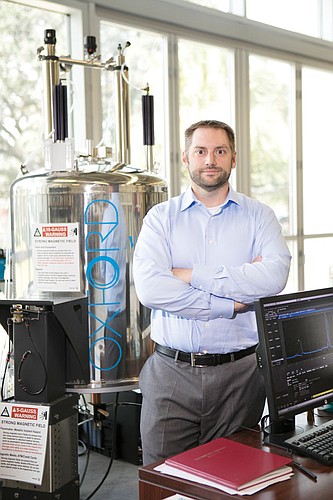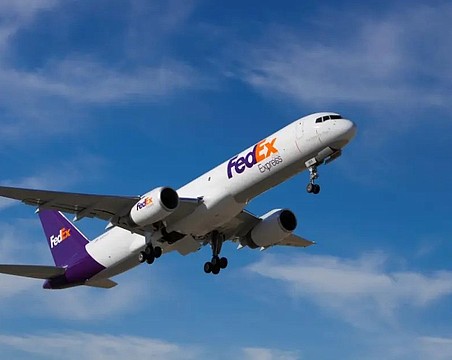A foursome of young biotechnology entrepreneurs and Ph.Ds, backed by $3 million in private funds, got together in 2004 to form Intezyne. The goal then remains the same today: Use polymers to protect medication until it can reach cancer cells
The company is still around 13 years later. That itself is a major feat in the biopharmaceutical industry, which is long on promise, short on uber-successful gazelles. After more than $25 million in research and development investment, Intezyne has not generated a dime in profit on any of its products and won't do so until 2022, at the earliest, say executives.
But Intezyne, after multiple almost-theres, could really be on to something this time.
The Tampa company achieved a significant — and potentially lucrative — regulatory milestone in June when it received an Orphan Drug Designation from the U.S. Food and Drug Administration for IT-139: a therapy designed to enhance the effectiveness of other anti-cancer therapies in treating pancreatic cancer.
The FDA's ODD designation, intended to encourage development of treatments for “rare” diseases that are poorly addressed by existing therapies, grants Intezyne up to seven years of “post-approval market exclusivity,” assistance in protocol design and an exemption from Prescription Drug User Fee Act (PDUFA) fees — key affirmations in the company's quest to develop “first-in-class” products designed to improve the effectiveness of cancer-fighting drugs.
“This is a very exciting time for the company,” Intezyne CEO and co-founder Kevin Sill says. “It has taken a lot of dollars and manpower for us to advance to where we are.”
'A Shared Passion'
Sill was part of the four founders of the company in 2004, when they all were fresh out of grad school. They started the business in a 3,000-square-foot laboratory in the Tampa Bay Technology Incubator at the University of South Florida's Research Park in north Tampa. Intezyne was the TBTI's first tenant and remains based there.
The company has evolved over the years as it changed from a research-oriented operation to clinical testing, at one time employing 19 people full-time, 12 of them research scientists. Intezyne currently employs nine people. “It was necessary to downsize the company as it transitioned from a research-focused company into a development-focused company in order to reduce overhead,” Sill says.
Intezyne's CFO, E. Russell McAllister, who joined Intezyne last November after advising public and private biopharmaceutical companies in New York, San Francisco and, most recently, Vancouver, says he was drawn to the company because of its “extreme innovation and the resulting potential of its products.”
Passion for what they do is another key element that has helped Intezyne and its employees persist, McAllister says. “Everyone at Intezyne shares a passion for helping cancer patients,” he says. “Cancer touches everyone. It is encouraging to know that if your company is successful, there are people out there, perhaps even your own family members, who will be living longer and healthier lives as a result. There are not a lot of industries where you can say that.”
Sill agrees, noting, “Technology is really the driver, with remarkable potential to impact and extend patients' lives. That was the key driver even through the most challenging times.”
The company's IT-139 could prove particularly useful in treating pancreatic cancer, the fourth most common cancer in the U.S., with approximately 54,000 new diagnoses annually. It is notoriously difficult to treat, with one-year survival rates of only 20% and five-year survival rates of 8%.
Other biopharma companies attempting to develop therapies for pancreatic cancer have failed. But Intezyne thinks it has a viable shot at improving these numbers.
Profound impact
Although IT-139 is Intezyne's most advanced product, it's not its only innovation. The company recently initiated a Phase 1 study of its second product, IT-141, at the Mary Crowley Cancer Research Center in Dallas. This trial, which focused primarily on safety and a related expansion trial that will also focus on patient outcomes, are expected to be completed by March 2019.
While IT-139 is a small-molecule drug that uses the rare metal ruthenium to inhibit GRP78, a critical cell survival pathway, IT-141 uses Intezyne's proprietary nanoparticle delivery platform to deliver an existing drug - in this case, irinotecan - directly to tumors, increasing treatment efficacy while reducing negative side effects.
“Importantly, Intezyne is not inventing new drugs, but instead improving existing drugs with our technology,” McAllister says.
Sill further explains the science: “Intezyne uses a special polymer, or plastic, to form 'nanocapsules' invisible to the naked eye that are then wrapped around the medication, shielding it until it gets to where it is needed, at which time the capsules disintegrate.”
Intezyne's nanoparticle platform delivery technology is “ingenious in its simplicity; profound in its impact,” McAllister says.
“In conventional treatment, relatively little of the cancer drugs that are administered go where they're supposed to go because they are distributed systemically, or everywhere,” McAllister says.
It's this incidental dissemination that creates many of the unpleasant or even life-threatening side effects commonly associated with chemotherapy. If Intezyne is successful, McAllister notes, cancer patients will get “more drug where you want it, and less drug where you don't.”
Challenges ahead
According to the Pharmaceutical Research and Manufacturers of America (PhRMA), on average, it takes at least 10 years and costs $2.6 billion for a new medicine to progress from discovery to marketplace. Clinical trials often take seven years. Even then, PhRMA documents, the “overall probability of clinical success — the likelihood that a drug entering clinical testing will eventually be approved — is estimated to be less than 12%.”
This high-risk, high-reward environment is why costs for cutting-edge drugs are so high and why so few biopharma companies survive to see their products commercialized, McAllister explains.
“The resources required to get there are so expansive that only the big multinational biopharma corporations — Pfizer, Merck, AstraZeneca, Roche — can afford to do the necessary research,” he says. “It takes an extremely long time and an investment of hundreds of millions of dollars to successfully develop a cancer drug.”
In essence, Intezyne's goal is to go out of “business.” “With rare exception, the goal of small biopharma companies like us is to either license our products to one of these companies or be acquired by them - and that's certainly our plan,” McAllister says. “Instead, our products would be sold by a 'big pharma' company like GlaxoSmithKline, Pfizer, or AstraZeneca.”
But before it can license products or be acquired, Intezyne first has to successfully demonstrate its products work. And that's a daunting challenge. To generate the necessary data, Intezyne will need to invest another “$10 to $15 million over the next two years and then go public to provide adequate funding for the next set of trials, which could cost upwards of $50 million,“ McAllister says. “We're currently on an IPO trajectory for late 2018 or early 2019.”
Until then, Intezyne must continue to solicit qualified investors at industry events such as June's 2017 BIO International Convention in San Diego, where, according to articles in trade and medical journals, IT-139 and IT-141 attracted significant attention from both prospective backers and potential strategic partners.
McAllister says Intezyne recently secured a $10 million-plus investment from “an institutional investor, a health care-focused fund,” he declined to identify. The company has otherwise been financed by “accredited, high-net-worth individual investors and family offices,” he adds.
Ultimately, Sill says, “The limiting factor in advancing our products is funding, and raising capital (in the Tampa Bay area) is quite difficult. There are no established institutional life science funds in the area, and, as a result, we will likely have to look outside the Southeast to find suitable investors for our Series B round.”
The irony, Sill adds, is Intezyne could never have gotten to where it is if it had not been for its 12-year tenancy at the USF technology incubator, as well as assistance from Hillsborough County and the city of Tampa. “It is extremely cost-effective lab space compared to similar facilities in Boston or San Francisco,” he says. “It's been a big asset.”
McAllister agrees: Intezyne's labs are substantially better equipped and cost a mere fraction of competitors' space in 'traditional' biopharma hubs.
However, as Intezyne grows, its ability to stay in Tampa becomes a growing challenge.
“We would love to stay and become Tampa's first homegrown biopharma success story, which would encourage other biopharma companies to follow suit, but it's getting harder and harder to do so,” Sill says. “We would prefer to stay in the area but circumstances may dictate we go elsewhere. We'll address that when the time comes.”






